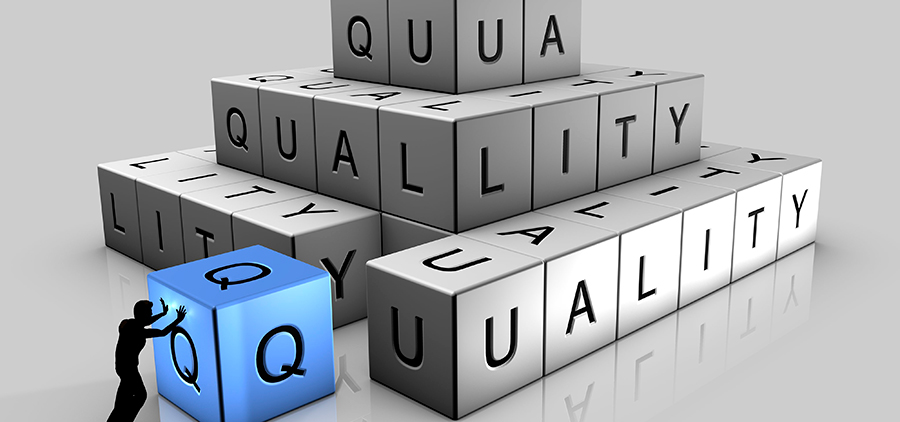5 most widely used types of Quality Management indicators
Using quality indicators to measure and check a company's performance are the best friends of those who monitor and analyze the operation, because they point the way and are a great benchmark.
The quality indicators can be diversified and have the function, by means of standards pre-established by the company, of measuring the expected final result in a reliable manner.
It’s worth remembering that monitoring the operation’s results regularly through goals and numbers is very important, because they will be proof that the process is operating efficiently.
To help you structure this monitoring in your company, we have listed the 5 Quality Management indicators used the most by PariPassu's customers.
But do you know what the main advantages of quality management indicators are?
- Obtain information to help in the decision making process
- Contribute to strategic planning
- A view of the business that is more critical
- Distribute and make better use of resources
- Avoid and eliminate errors
- Continuous improvements to the process
Now that you know the advantages, let's check out the highlights of the indicators
1. Efficiency indicator
The efficiency indicator allows you to detect waste of resources, which will reduce your productivity.
Efficiency focuses on the process and reflects indirectly on the customers. We can mention a few points that interfere with this indicator:
- Work hours per product produced
- Amount of money spent for the execution of a certain activity
- Number of hours a team’s work is interrupted or a machine is shutdown
But do you calculate it? This can be measured through production management software that allows the control of raw material purchases, cost control, disposals, among other points.
2. Safety/Quality Indicator
This indicator is critical in order to prevent damage to the customers' health or physical integrity, for example.
A simple way of measuring this is by performing inspections and controls of the production, of the final products, of the raw materials, and also of the critical points of the operation’s control, through checklists and analyses.
It’s important to check that the safety measures and requirements of national and international certifications and standards are being met in your product.
CLICQ automated checklist application
3. Efficiency indicator
Efficiency measures the level to which results are achieved, i.e. focus is on the accomplishment and not on the resources spent to reach such a result.
Thus, efficiency indicators focus on the product and the result obtained, and are directly related to customer satisfaction. This is precisely why they relate more to issues, such as customer service, satisfaction, punctuality, reliability, etc.
As an example of efficiency indicators, we have:
- Percentage of customer complaints;
- Product durability;
- Quick completion of a call;
- Reliability of the product, service or team;
- Product or service or team performance.
And it’s worth remembering that these efficiency indicators are linked directly to the company's profit increase.
4. Effectiveness Indicator
Effectiveness is merely the combination of efficacy and efficiency. This indicator shows the consequences of a product or service.
Effectiveness indicators can measure whether the proposed objectives have been achieved.
In other words, an effective company performs processes that provide good results for customers, with reduced costs and increased profitability. Effectiveness indicators answer questions, such as:
- Is the service offered relevant to the customer?
- Has the project contributed to increase revenue?
- Does the project reduce employee mistakes.
5. Customer Service indicator
Among the quality indicators, the customer service indicator will show whether your company is really delivering what it promises when offering a certain product or service to consumers.
A very important factor here is the need for the after-sales process, to follow up with customers very closely.
You’ve probably heard that the best customer satisfaction index is the word of mouth strategy, right? Well, monitoring the customer service indicator is very important so you can know if your brand has customers who will promote your company for you.
Implementing quality indicators
It’s worth remembering that quality indicators vary from company to company, and according to the organizational goals of each one.
The indicators mentioned here tend to be general for any type of business. Our tip is to always evaluate what makes sense in terms of monitoring at this time for your company; to do so, the indicators must be 100% related to your company's goals, for example:
- Be used in the decision-making process;
- Be a strategic point;
- Adhere to the company's business;
- Be relevant across all levels and sectors;
- Be based on reliable and measurable data;
- Serve as input for an action plan.
Indicators can greatly facilitate your company’s quality management
Management panorama of production indicators
Do you want to learn how to generate greater reliability of your records, with quality information and process assurance?
+Content
We have listed additional content that you will enjoy:
- Use Traceability to the Advantage of Food Quality Control



